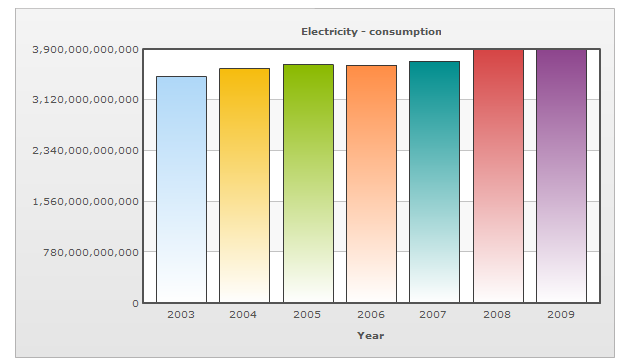And Old Idea in New Form The Stirling Engine


The Stirling Engine

Okay, can't we make the sun be our heat source?


The measured efficiency of the technology shown above is 32% (under ideal conditions)
But beware that Unit capacity is only 25 KW. Still, that's enough to power 8 to 10 houses. One might want to design new residential areas around such devices into areas like the Southwest
The future Desert Sun Farm:

Okay, so how might this technology scale to meet 1.36 TW of nameplate capacity?
Well let's see:
 very hard
to find this information! Closest thing I found was that recent advancements
have lead to a 25% reduction in total weight with a loss of 5000 lbs. This implies
a weight of 15,000 lbs or in round numbers 8 Tons.
very hard
to find this information! Closest thing I found was that recent advancements
have lead to a 25% reduction in total weight with a loss of 5000 lbs. This implies
a weight of 15,000 lbs or in round numbers 8 Tons.
Compare that to wind power.
Latest Vesta 3 MW Windturbine comes in at a total weight of about 265 Tons.
3 MW requires 120 SES dishes or 960 Tons of Material or a factor of 3.5-4.0 more material per generated unit of power. Not great, but not a show stopper.
Production requirements:
1.36 TW of nameplate capacity would require 55 Million of these devices.
How long would that take to produce? Well this is mostly automotive assembly line processes that are in place for production (particularly for the 82 elements of the mirror). Producing a few ton unit of mostly steel and components is what is done for medium duty trucks. Long term average production light duty trucks per year. Presumably that could be an output level for SES.
So the point is that 55 million units could probably be produced over a 10 year period if this was a national priority.
Land requirements:
Mirrors are 12 meters wide so probably space each unit by about 50 meters. Therefore can place 20x20 = 400 units per square km for average power of 10 MW per sq km if flat. Tilting them toward sun reduces horizontal footprint and likely gains you a factor of 2 spacing in each dimension.
This means 1600 units per square km or 40 mw per sq km.
So now we need 1.36TW/40 MW = 34,000 square km (about 12% the size of Nevada)
Total Land Cost:
"Cheap land" goes for about $50,000 per acre.
34,000 square km is about 8.5 million acres = 425 billion dollars cost. Production costs even at $2 per watt (current costs are higher) would be 2.7 trillion so you can see that land costs are not an issue.
Now of course, the above scenario only works when the sun fully illuminates
this Nevada Saves the US Power Array so in the real world you would need
energy storage and the like for 24 hour operation.
But the main point is this:
The US could build a 50 million (1 dish per 7 people in the US)
SES dish array over the next 10 years in Nevada
to produce 100% of its daytime electrical production needs at a total investment
cost of about $300 billion per year. This is not impossible.
So what about payback times?
Current US Electricty consumption

WTF is the problem ...?